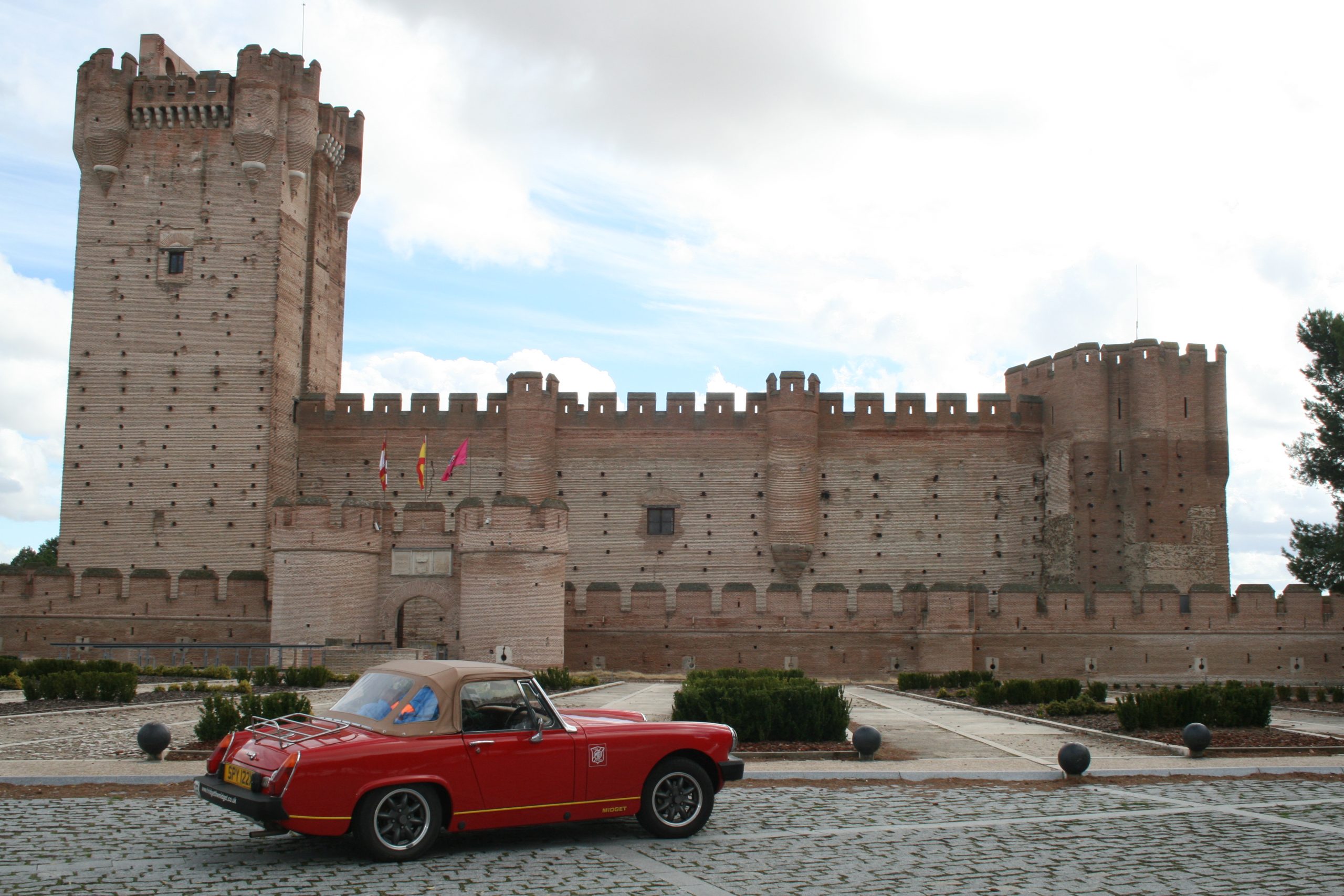
Bridget and I arrived in Bilbao from Portsmouth on the 27th October. I decided to take the ferry as I had commitments that kept me in England until the 25th October, leaving me only six days to get to Huelva in southern Spain.
Docking at 7:45 am, I decided we would drive down through Burgos and Vallalodid to Medina del Campo. It was an easy drive and we arrived a little after midday. The main reason for visiting was to see the Castle of La Mota which I mistakenly thought had links to the Knights Templar. Although the castle had a military function it was not one of the Templars’. It was used as a prison for the notorious Cesare Borgia (is he the American comedian that also played piano?). In 1489, following the marriage of Catherine of Arragon to Prince Arthur, son of Henry VII, and in recognition of France as a common enemy, the Treaty of Medina del Campo (1489) was signed (sounds better than the Treaty of Rome!).
Being somewhat ahead of schedule I decided we would continue our journey and stay in the university city of Salamanca for the night. The University of Salamanca was founded in 1134, making it the fourth oldest western university, but the first to be given its status by the Pope Alexander IV who gave universal validity to its degrees. It is an interesting, historic city that has played a major role in modern Spain, even being considered the de facto capital of Spain during the civil war.
We headed south the following day, driving through Plasencia and Caceres before cutting across country to Badajos. From there we drove south to Jerez de Los Caballeros. This was my second attempt to see a Knights Templar location. As you may have gathered, I know very little about the Knights Templar, only knowing the youngest brother, Simon! This time however, we got it right. The town of Jerez de Los Caballeros was founded in 1229 by Alfonso IX of Leon. His son granted it to the Knights Templar in recognition of their services defending the Christian faith. The castle was originally built by the Moors but was rebuilt in 1479 by the Knights of Jerez. The town was surrounded by a Moorish wall that had six gates although only two survive today. Much of the wall can still be seen although renovations are being carried out to stop some of the wall from collapsing.
Friday the 30th October, Bridget and I set-off for the port of Huelva (pronounced hWuelva). We arrived in time for lunch having had a scenic tour on route.
I had never heard of Huelva previously, but it seems that it had a large English ex-pat residency in the 19th century employed by Rio Tinto Mining. There were large deposits of copper and pyrite.
Huelva is a pleasant city, largely of modern architecture which is surprising given that it has been inhabited since 3,000BC. I only had the afternoon to explore, so ended up taking only two photos. The first was of a sculpture depicting a ‘Monument of Our Lady of Rocío on Almonte Shoulders’.
The second photo is of Cristobel Colon. There are conflicting theories of who he was, one being that Cristobel Colon was the Spanish name for Christopher Columbus, the other, that I favour, is that he was the inventor of both the ‘colon’ and the ‘semicolon’ without which the English language would be the poorer. Surely the clue is in the name!
La Rábida, a suburb of Huelva, is where Columbus sought the aid of the Franciscan brothers in advancing his project of discovery. They introduced him to some local wealthy sailors (a service which I believe is still available today), the Pinzón brothers, and, eventually arranged a meeting in Seville with Ferdinand and Isabella.
Tomorrow morning, I will drive Bridget down to the ferry terminal for our thirty-three hour voyage to Gran Canaria. We are due to dock at around 9:00pm.